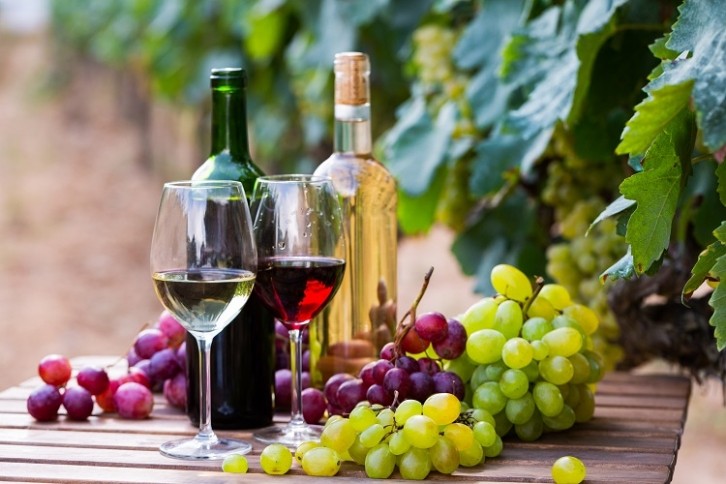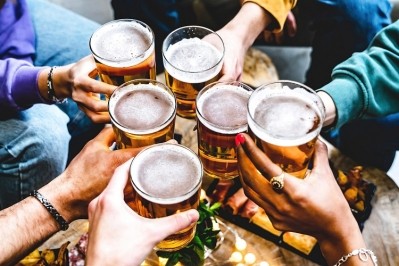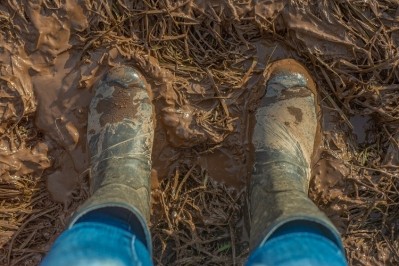Are central European wines on the brink of extinction?

France, Italy and Spain are renowned wine producing countries. Unfortunately, however, these are also some of the countries becoming most associated with the devastating effects of the climate crisis. In particular, extreme high temperatures are damaging, and in some cases destroying, grapevines.
Furthermore, droughts cause water stress to plants, which can lead to crop failure. The 2023 water shortages in Europe led to a significant drop in crop yields. And some countries fared worse than others, with Italy experiencing almost constant drought this year, which is causing big problems for wine producers there.
“The climate crisis is not ideological, it is a dramatic reality in Sicily,” Angelo Bonelli, a spokesperson for the Europa Verde (Green Europe) political party, said while rallying outside government headquarters in Rome, in July. “Farmers are uprooting vineyards, citrus groves, they are slaughtering animals because there is no water. This is a disastrous situation.”
Similarly, Spain reported drought conditions in April, long before the beginning of summer, leading to an emergency water-saving plan. France has been forced into a 53-point plan to save water for all sectors of the economy. But whether these plans will be enough to save the wine industry, within their respective countries, remains to be seen. So, are we seeing an end to the dominance of central European wines and the beginning of northern European dominance?
Is the wine industry changing for good?
FoodNavigator recently reported on the rise in success of English wines, and the emerging markets across the globe. Are these the wine-producing nations the next generation will recognise? It’s starting to look that way, as long-established winemakers in central Europe struggle against changing climate conditions.
“Climate change is certainly having an impact on wine production across Europe,” James Simmonds, partner at UHY Hacker Young, told FoodNavigator. “Some European vineyards are seeing milder winters with unexpected cold snaps killing off young grape growth and hotter summers that are damaging grape quality and consequently the taste of their wine.”
And people within the wine industry are also voicing their concerns.
“Climate change is placing significant pressure by way of extreme events - fires, droughts and floods in some older and warmer wine producing areas,” Dr Alistair Nesbitt, CEO of winemaking consultancy, Vinescapes, told FoodNavigator.

In contrast to this, winegrowing regions in northern Europe are benefitting from the rising temperatures as the temperate climate allows for successful crops.
“In the UK this rise in temperatures is allowing for suitably warm conditions that allows grapes to fully develop, ensuring a higher quality harvest,” adds UHY Hacker Young’s Simmonds.
And it’s not just UK wines which are benefitting from this change in conditions.
“In the northern hemisphere there is significant expansion occurring in parts of Canada, China, Belgium, Poland, Sweden, Denmark and around the Finger Lakes in the USA. Climate change, and particularly warming during the growing season, combined with a range of different and sometimes new grape varieties, is transforming previously non-viticulture areas,” says Dr Nesbitt.

What can be done to protect existing wine producers?
It’s clear that, in order to protect long-established European wine producers, the industry needs to act and act fast. But what measures can the industry take to protect its future?
“One route in helping to mitigate climate change and build resilience, is for grape growers to adopt regenerative viticulture techniques,” says Dr Nesbitt. “Regenerative viticulture contributes directly to building soil health, sequestering carbon and enhancing biodiversity in vineyards. This is something all vineyards can do to help protect the sector and the planet.”
However, this might not be enough.
“Whilst there is good opportunity for adaptation in viticulture systems and a means of ultimately increasing resilience to changing weather and climate ‘conditions’ the extremes we are seeing and can expect to see more of, will damage both grape and wine quality,” says Dr Nesbitt.
It’s therefore clear that, as with all things related to climate change, everyone must do their part to help to protect the environment.
“It’s a devastating projection, but over the next 50 to 100 years, if we don’t manage to slow down or stop the trajectory of temperature rises, viticulture and wine producing regions, which are centuries old, will become unviable,” says Dr Nesbitt.
And wine producers are all too aware of this threat, leading to a marked uptick in the adoption of sustainability initiatives, including regenerative viticulture.
“This positive trend is being driven by both the market and producers who want to protect their land and make the best wines possible,” says Dr Nesbitt.
What can be done to protect future wine production?
As extreme high temperatures and drought continue to negatively impact the wine industry, it is becoming increasingly clear that measures need to be taken to create more resilient production systems to protect food and beverage production. With this in mind, the World Economic Forum (WEF) has detailed a number of ways countries can work to mitigate the effects of, and tackle, climate change across the food and beverage industry.
- Invest in more resilient agricultural practices, such as drought-resistant crops and irrigation systems.
- Diversify production so that producers are not reliant on a few staple crops.
- Reduce waste to make the most of what is produced.
- Support policies that promote food and beverage security, such as subsidies for farmers and food banks.















